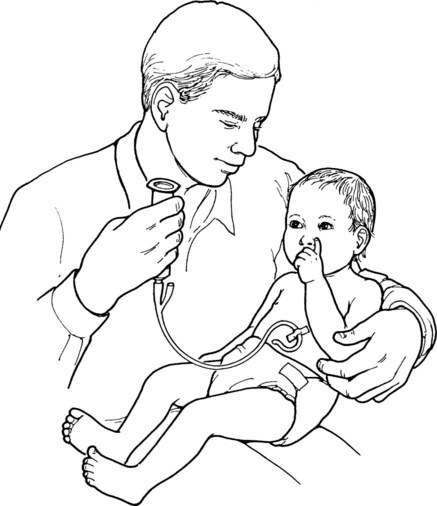This section may be photocopied and distributed to families. You should give the child ounces of every hours. Call your health professional at (phone number) if any of the following occurs: • Change in color of stomach contents • Increased amount of stomach contents before feeding • Increased number of bowel movements • The child becomes very irritable • Increased redness around gastrostomy site • Two meals are missed because of too much food in the stomach Liquid food at room temperature in a container Water to rinse tube; 1-2 ounces is usually sufficient depending on the child’s size Syringe: feeding syringe has a flared flange, which fits the opening of the gastrostomy feeding tube. A conventional syringe will not fit this opening. 2. Wash your hands with soap and water. Count to 10 while washing, then rinse with clear water and dry with a clean paper or cloth towel. 3. Tell the child (even if infant) what you will be doing. 4. Place the child on your lap or reclining in an infant seat or carrier. The older child can sit in a chair or on a bed. 5. Use a pacifier for the infant to enjoy sucking during the feeding. 6. Attach the syringe to the gastrostomy tube. 8. Pull back gently on the plunger to see the amount of food left in the child’s stomach. 9. If more than one fourth of the last feeding is still present, return the food to the stomach and wait 30 to 60 minutes. When there is less than one fourth of the amount of food, feed the child. 10. Clamp the feeding tube and detach the syringe. Pull out the plunger and reattach the syringe to the feeding tube. Unclamp the tube. Hold the syringe and tubing below stomach level when filling the syringe to prevent excess air getting into the stomach. 11. Fill the syringe with the right amount of food. 12. A gentle push with the plunger of the syringe may be necessary to start the flow of food; then remove the plunger and allow the food to flow by itself. Do not forcefully push on the plunger to speed up the feeding. If the liquid feeding is pushed back into the feeding syringe instead of flowing by gravity, leave the plunger in the barrel of the syringe until the feeding is completed. 13. Never hold the bottom of the syringe higher than the child’s chin (Figure 1). 14. Continue adding food to the syringe until you have finished the right amount. Do not let the syringe become empty. 15. When the food is at the bottom of the syringe add water (2 to 3 teaspoons [10 to 15 ml] or the amount specified by your health professional) to rinse the feeding tube and keep it from clogging. 16. Clamp the tube and remove the syringe. 17. Gently pull the tube to allow the balloon to rest against the inside of the stomach at the opening. 18. Tape the tube to the skin to prevent it from advancing or allowing stomach contents to leak on the skin. 19. Hold and cuddle the child after the feeding. 20. Wash the syringe in soap and warm water using a bottle brush. Rinse the inside well with clear water. Dry the syringe and plunger. Put the plunger in the syringe when dry, and store it in a clean dry container between feedings (e.g., plastic bag, margarine container).
Wilson & Hockenberry: Wong’s Clinical Manual of Pediatric Nursing, 8th Edition
Patient Teaching Guide
Giving Gastrostomy Feedings
Gastrostomy Tube Feeding
Equipment
Instructions
![]()
Stay updated, free articles. Join our Telegram channel

Full access? Get Clinical Tree


Nurse Key
Fastest Nurse Insight Engine
Get Clinical Tree app for offline access

